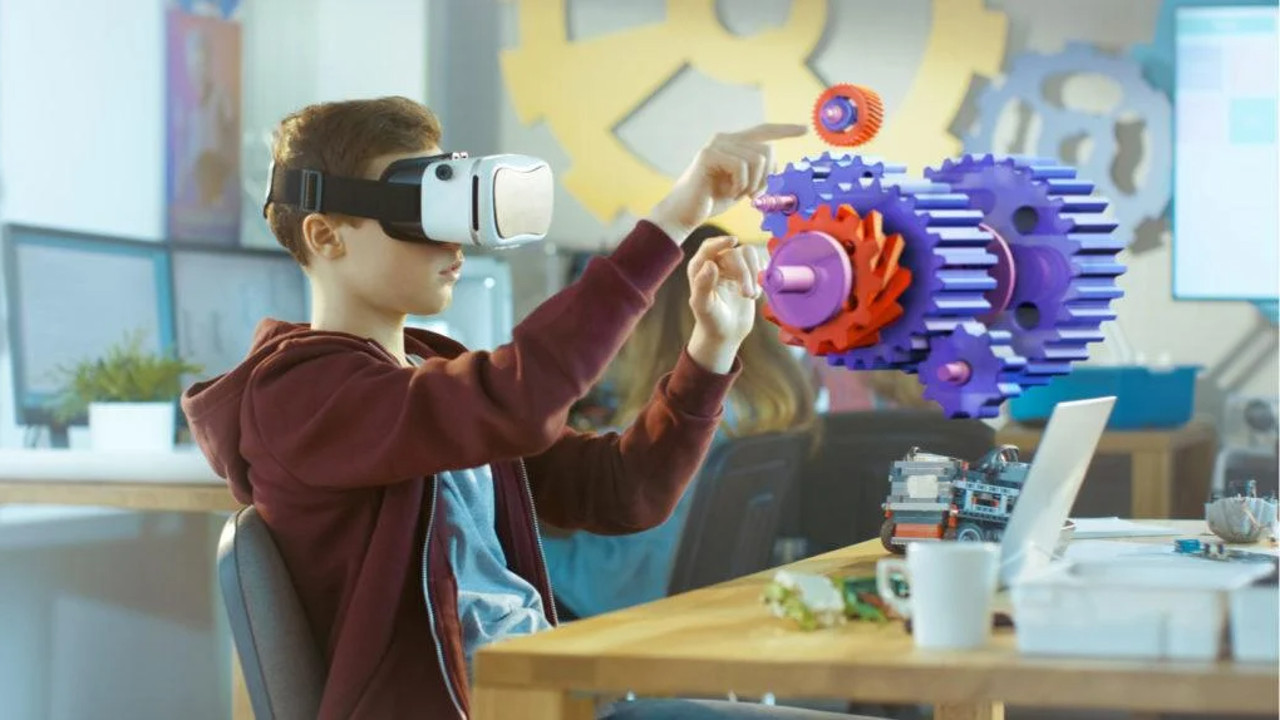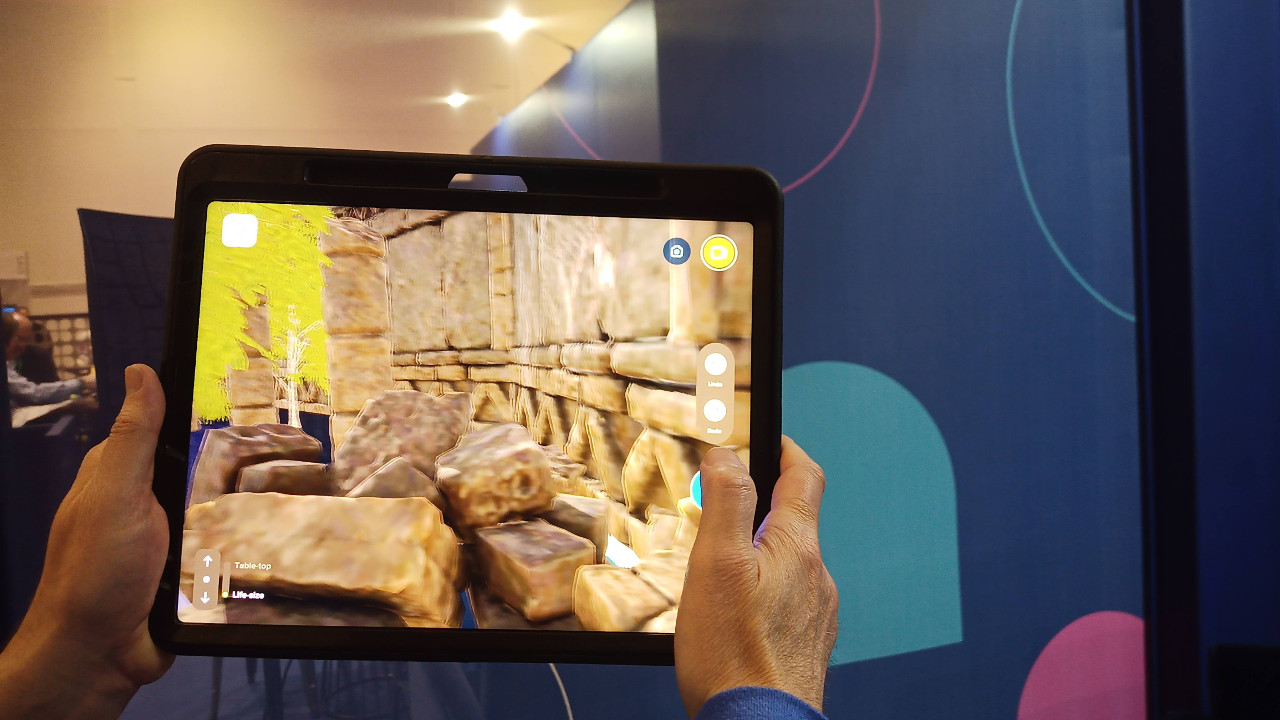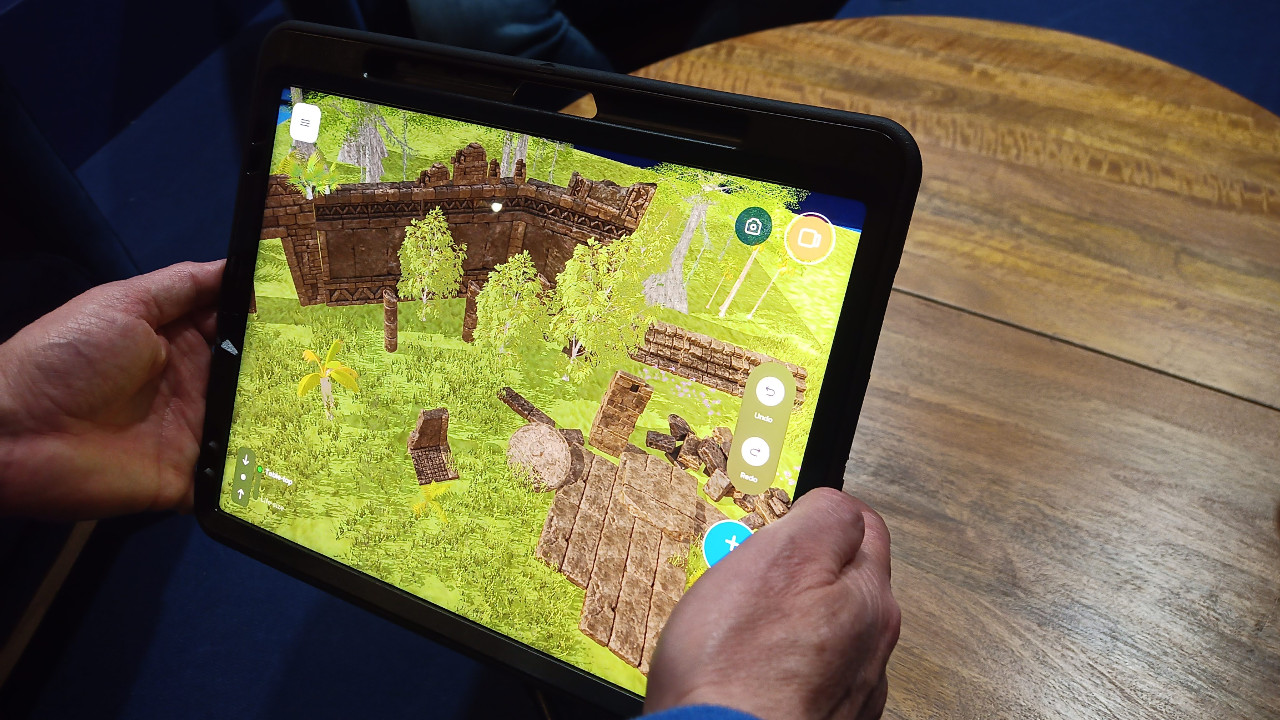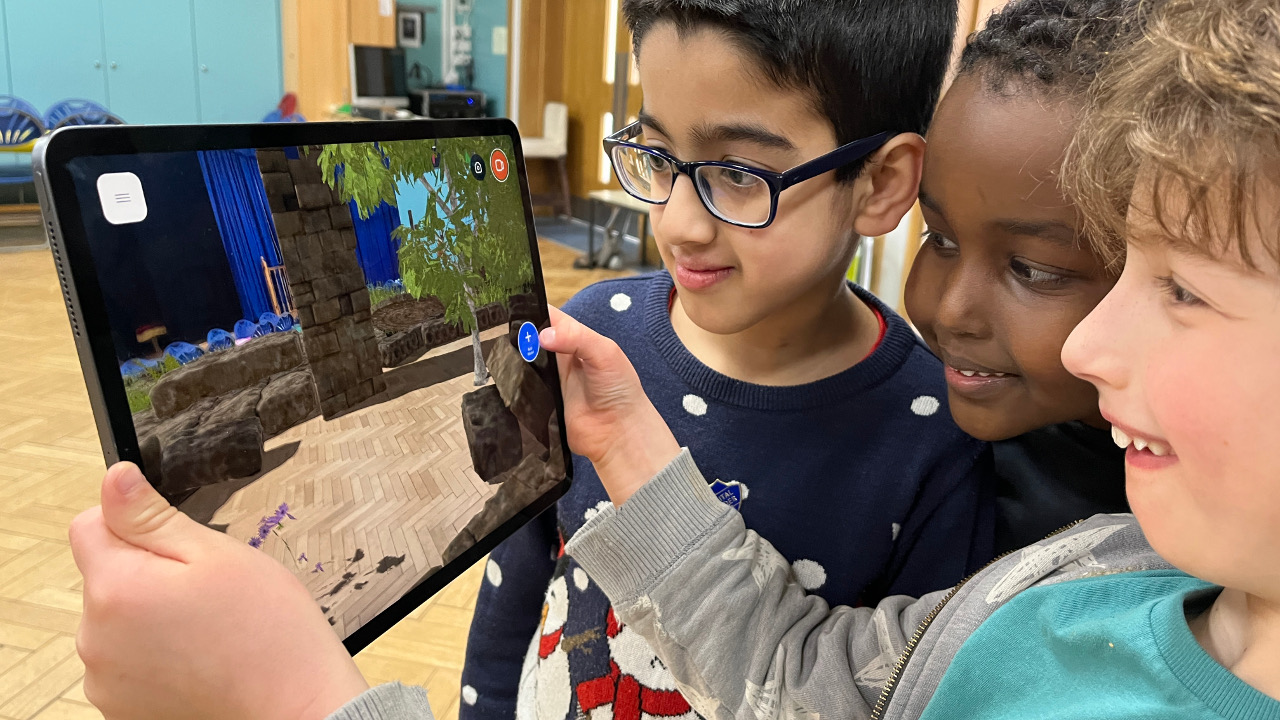What Is Augmented Reality?
Augmented Reality could be the future of teaching and it's available to use right now

Augmented reality, or AR, is a combination of virtual displays and real-world backgrounds. So this isn't VR, in which a headset is worn that cuts out the world to view screens as if in a digital location. This combines the two.
AR uses screens and cameras to overlay digital objects on the real world. As such, it is ideal for use in schools as it can create virtual items that might otherwise be prohibitively expensive or dangerous to have in the room.
Augmented reality can add digital elements to the real world to make textbooks 3D or turn a classroom into a virtual escape room. It can also mean a large space such as a gym can become an area populated with structures to explore, as if transporting students to a far away or ancient land.
This guide aims to explain all you need to know about augmented reality in education.

What is augmented reality?
Augmented reality is, as the name suggests, taking the real world and changing it by overlaying digital objects. Consequently, it requires a display and screen to work. While the most immersive way to do this is by using a headset such as Microsoft Hololens, these are still very expensive bits of kit.
That said, there are now more and more augmented reality headsets with cameras built-in, which can be used to feed in your surroundings and overlay digital objects. As opposed to virtual reality, in which even the background is digital too.
There are also more and more augmented reality apps appearing now for use on smartphones and tablets. Since Apple launched its ARKit, it's made developing this kind of software easier than ever. What once required huge amounts of processing power can now be done even on older devices.
Tools and ideas to transform education. Sign up below.
Augmented reality can be used to place a virtual character in a room, to bring a book to life with videos, to touch and interact with a virtual experiment, and much more.

How can augmented reality be used in education?
Augmented reality, as you can see in the above image, can directly enhance the classroom experience for students. At its most basic, an app can be used with a textbook, for example, to bring that content to life. Images from the book can be placed into a 3D format in front of the student. In some cases it can also allow the student to interact with the object, manipulating it to see the effect.
From learning human anatomy and the star system to performing a virtual experiment, the possibilities are myriad. Imagine an entire class being able to carry out a physics experiment without the need for any equipment, as each student simply uses their own devices.
Not only can this be cost saving but it can also save time and valuable storage space. It can also allow an opportunity to try experiments that might be dangerous or not possible in a real school scenario.

Exploring and building virtual worlds, overlaid in real space, is another option. As you can see in the images above and below, students can create using building blocks and then walk around their scaled up creations. In the case of Sandbox AR, students can explore ancient civilizations on the other side of the world that might otherwise be out of reach to them.
Manipulate parts in a virtual machine, see data overlaid on the parts of a real system, follow guidance on how to operate a device looking through that AR display. The possibilities are vast and growing every day.

How can schools get augmented reality?
Schools can invest in headsets, with many sold in bulk now, aimed at entire class use. These often come with supporting software, which is designed specifically for teachers to use, guiding the students in the augmented virtual world.
But there are more affordable ways, such as using already owned hardware including smartphones of students or the school, and tablets too. As long as the device has a camera and screen, isn't more than about five years old, and runs Android or iOS, it should be able to run augmented reality. There are even lots of free AR apps available now to get students and teachers started right away.
Since Apple introduced software advances that make building virtual reality easier, it has grown massively in education. One leading name is Discovery Education, who offers a good example of augmented reality with their new app that was featured at Bett 2022.
We've also compiled a list of the best virtual and augmented reality headsets for schools, which shows the options out there and can give you an idea of pricing.
Luke Edwards is a freelance writer and editor with more than two decades of experience covering tech, science, and health. He writes for many publications covering health tech, software and apps, digital teaching tools, VPNs, TV, audio, smart home, antivirus, broadband, smartphones, cars and much more.
